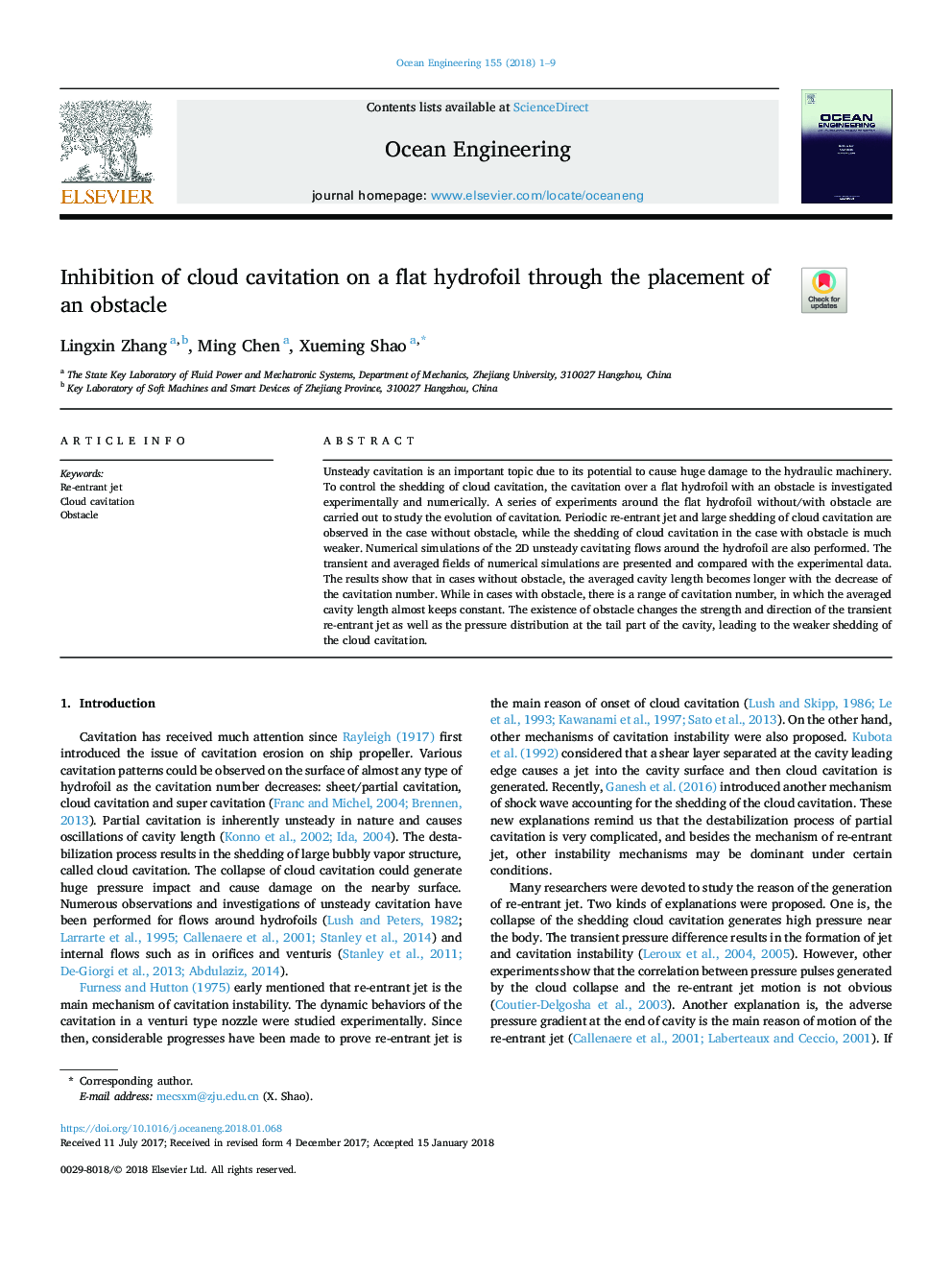| Article ID | Journal | Published Year | Pages | File Type |
|---|---|---|---|---|
| 8062790 | Ocean Engineering | 2018 | 9 Pages |
Abstract
Unsteady cavitation is an important topic due to its potential to cause huge damage to the hydraulic machinery. To control the shedding of cloud cavitation, the cavitation over a flat hydrofoil with an obstacle is investigated experimentally and numerically. A series of experiments around the flat hydrofoil without/with obstacle are carried out to study the evolution of cavitation. Periodic re-entrant jet and large shedding of cloud cavitation are observed in the case without obstacle, while the shedding of cloud cavitation in the case with obstacle is much weaker. Numerical simulations of the 2D unsteady cavitating flows around the hydrofoil are also performed. The transient and averaged fields of numerical simulations are presented and compared with the experimental data. The results show that in cases without obstacle, the averaged cavity length becomes longer with the decrease of the cavitation number. While in cases with obstacle, there is a range of cavitation number, in which the averaged cavity length almost keeps constant. The existence of obstacle changes the strength and direction of the transient re-entrant jet as well as the pressure distribution at the tail part of the cavity, leading to the weaker shedding of the cloud cavitation.
Related Topics
Physical Sciences and Engineering
Engineering
Ocean Engineering
Authors
Lingxin Zhang, Ming Chen, Xueming Shao,
